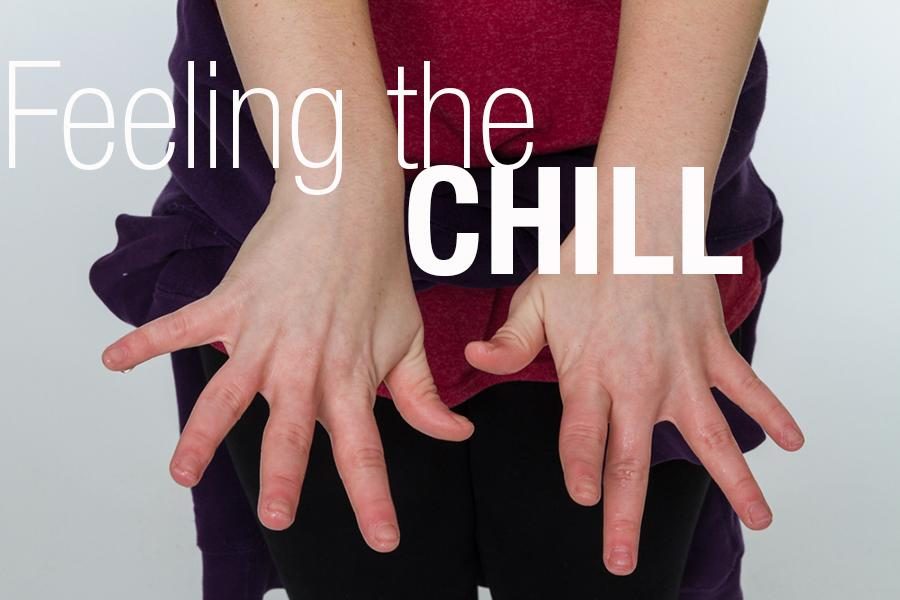Senior copes with painful disease in hands
Photo by Ayla Sozen
December 2, 2015
It’s 68 degrees outside, the wind is blowing and leaving a trail of goosebumps on my skin. Despite the numerous layers of clothing I’m wearing, violent shivers take over my body. Cold weather is never comforting for anyone, but victims of Raynauds Disease, like me, suffer extreme pain and public humiliation.
Raynauds Disease is a circulatory disease that is commonly found in women over 40. It causes discolorations in body parts as a reaction to extreme cold weather and, in some cases, stress. The fingers and toes are the most commonly affected areas. Red, blue and white are the range of colors that take over each body part. With the discoloration comes great pain for the patient.
There are two categorized diagnoses of Raynauds. There is Primary Raynauds which is the safer diagnosis. A patient with Primary Raynauds doesn’t experience extreme pain that needs to be treated in a serious manner and blood flow is easy to regain. This is simple to treat by keeping body parts warm and protected from cold weather conditions.
The other diagnosis is Secondary Raynauds. Rather than Primary, Secondary Raynauds is given more serious attention. It is a result of an underlying disease, immorality of the body part, severe inadequate blood supply/flow and failure to restore the blood flow in the body. The pain experienced is higher and the overall prognosis is harder to treat.
Two years ago I was diagnosed with Secondary Raynauds disease. Although it can be genetic, Raynauds isn’t something I was born with. Its onset was sudden and the exact explanation as to how I developed it is unknown
Outdoor activities such as football games, parades or even just simply walking to and fro outside is a painful when the weather isn’t at a comfortable low 70s or above. At first, the exposed body parts turn a red color and tingles from the cold. I shove my hands into my jacket pockets in fists to slow the process. Since my blood flow isn’t quite normal, Raynauds continues to take its toll over me. Next, I’m turning a blue color that resembles a smurf. This is when the pain picks up.
Now, I can feel the pain and cold throughout my body. My feet, despite my boots and fuzzy socks, start aching while my legs begin to shiver. The pain can sometimes be so unbearable that I can’t stand. My hands are the most recognizable indicator of the disease as the tips of my fingers turn white. Movement in my fingers and wrists become slow and at times cease as they lock up in their natural curved postures.
The disease creates a mood of frustration and puts a hold on my life’s activities at times. My family are avid hunters. Raynauds makes it difficult to participate and enjoy early morning hunting trips with my dad. In these past two years I’ve missed more than I’ve attended. I love to play soccer, but running constantly up and down field in the Texas cold doesn’t agree with my body’s inability to produce an adequate blood flow. When snow falls I can’t join my brothers in snowball fights or in snowman building competitions because I can’t hold the snow for more than a few seconds.
Instead of enjoying the fall breezes and winter snows, I am constantly struggling to keep every inch of my body warm. At times I’m able to fight through it, but often the disease wins and I stay retreated in my house or hidden under layers of fleece.
















